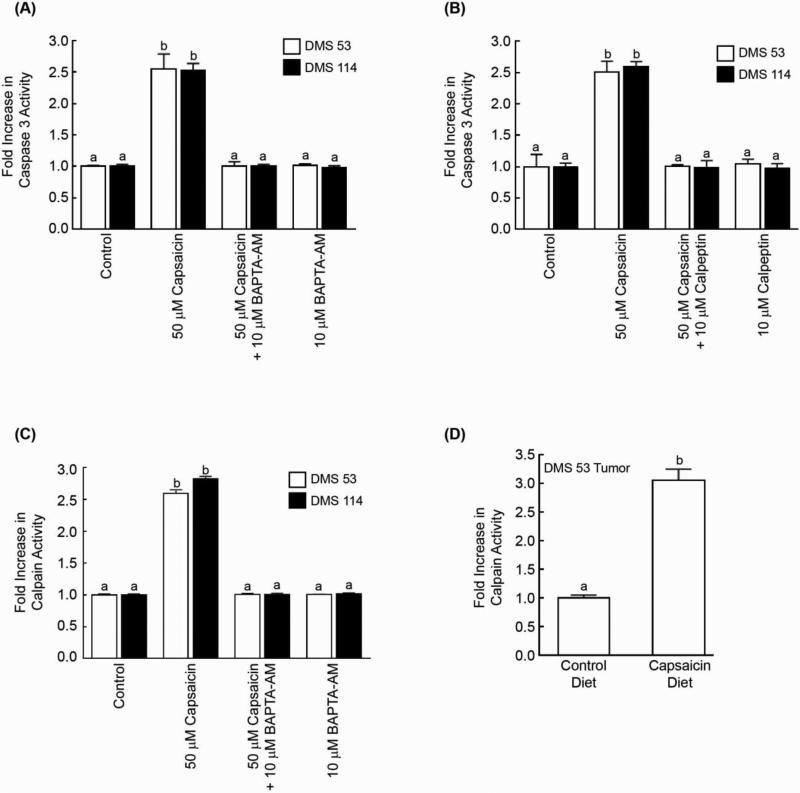Fig. 5.
Caspase-3 activity assays reveal that capsaicin-induced apoptosis requires intracellular calcium and the calpain pathway. (A) The intracellular calcium chelator BAPTA-AM abrogated the pro-apoptotic activity of capsaicin. (B) The calpain inhibitor calpeptin reversed capsaicin-induced apoptosis in DMS 53 and DMS 114 cells. (C) Capsaicin increased the calpain activity in DMS 53 and DMS 114 human SCLC cells. Capsaicin-induced calpain activity was blocked by the calcium chelator BAPTA-AM. Each sample was analyzed in duplicate and the experiment was completed two independent times. (D) Tumors lysates were prepared from nude mice experiments represented in Figure 2A. The lysates isolated from capsaicin-fed mice displayed higher calpain activity than tumor lysates from control untreated mice. Data represent mean ± SEM. Results indicated by a different letter are significantly different (P < 0.05).

